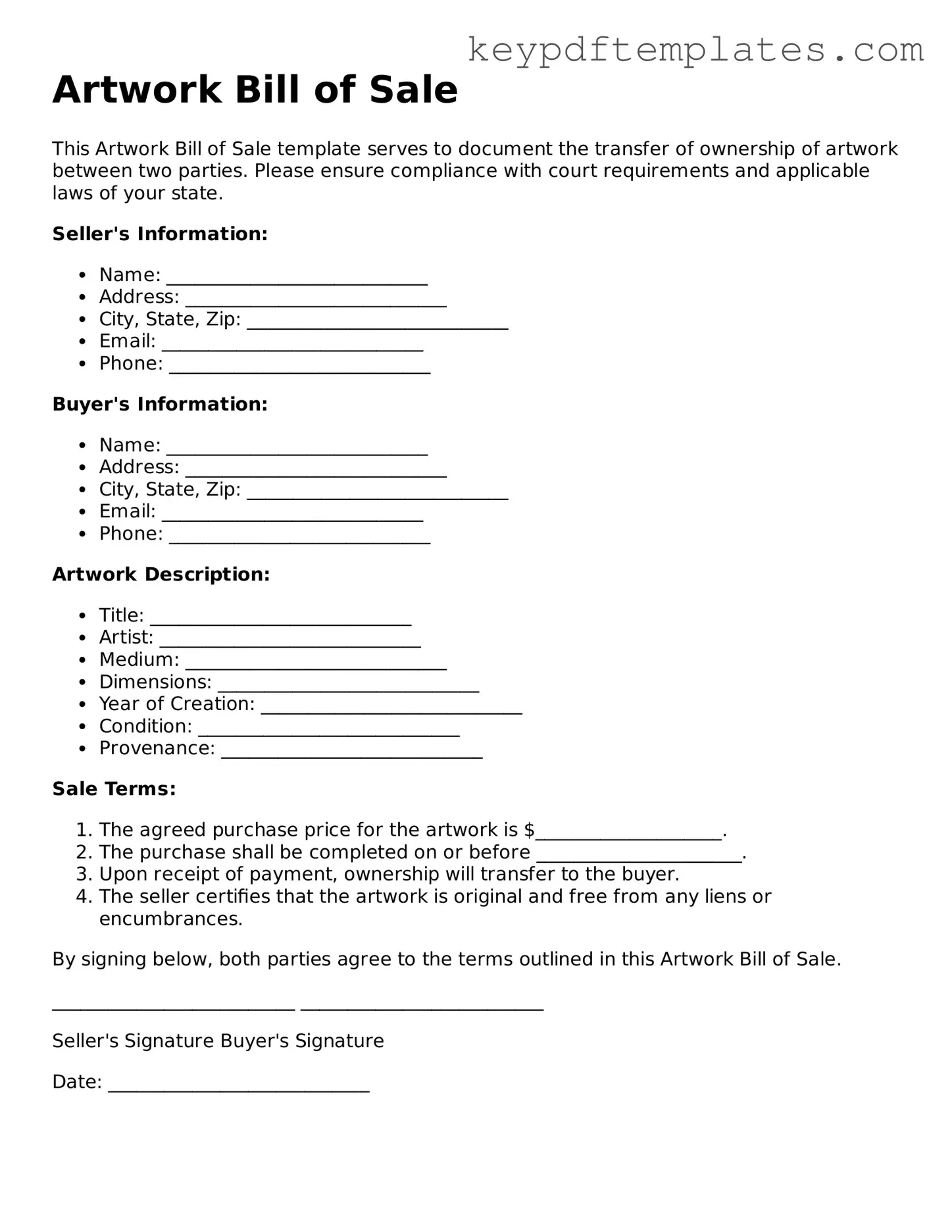Printable Artwork Bill of Sale Template
The Artwork Bill of Sale form is a legal document that records the transfer of ownership of artwork from one party to another. This form serves as proof of the transaction, detailing important information about the artwork and the parties involved. Proper use of this form can help prevent disputes and ensure a clear understanding of the sale terms.
Modify Document Online
